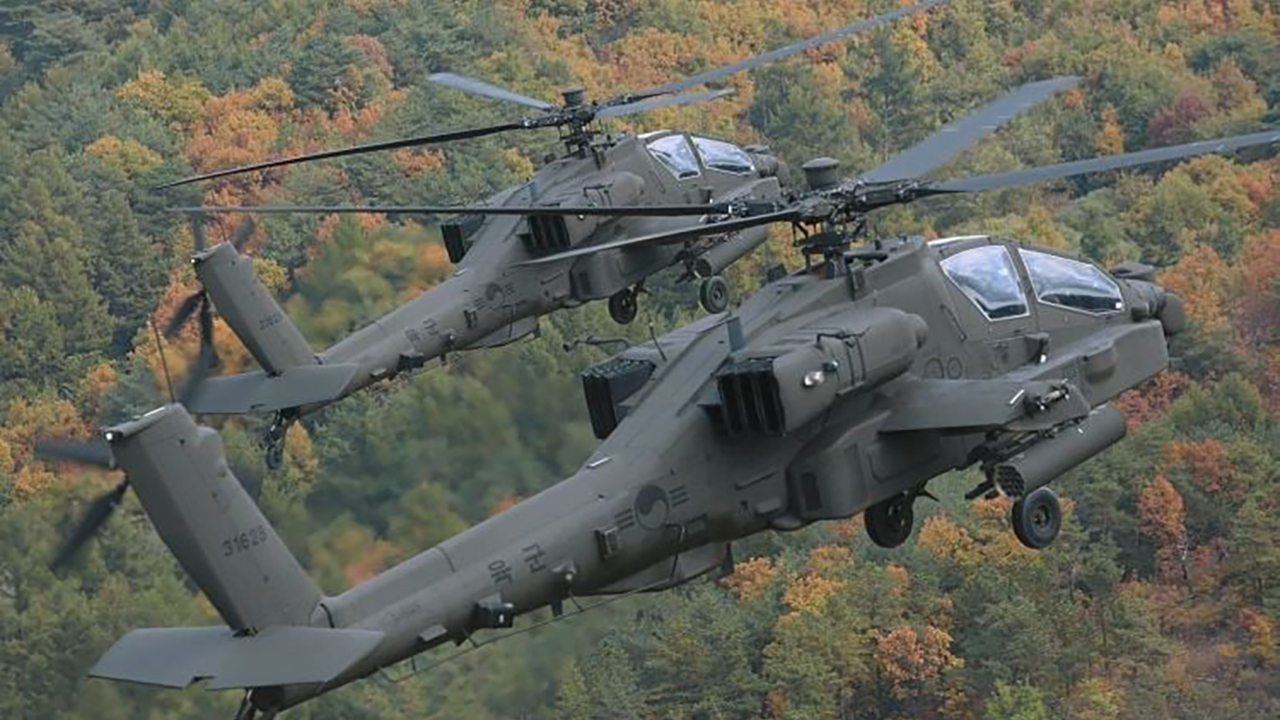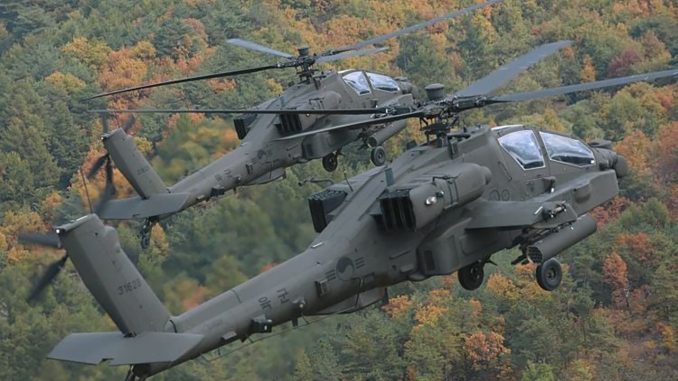
The State Department has approved the sale of 36 AH-64E Apache helicopters and hundreds of associated air-to-ground munitions to South Korea.
The State Department recently approved a possible sale of up to 36 AH-64E Apache attack helicopters and related equipment to the Republic of Korea. These helicopters will complement the Army’s current fleet of 36 AH-64Es and replace some of the AH-1S Cobra helicopters that will be retired this year.
The request from Seoul included up to 76 T700-GE-701D engines for the Apache (72 of which are installed in the twin-engine helicopters, plus 4 as spares), as well as 456 AGM-114R2 Hellfire anti-tank missiles and 152 AGM-179A Joint Air-to-Ground Missiles (JAGM). The request also included additional sensors, rocket pods and additional ammunition, as well as technical and logistical support services, with a total estimated value of $3.5 billion (€3.14 billion).
The FMS to South Korea comes just days after Poland signed a contract to sell 96 AH-64E Apaches, which will make the country the second largest user of the type in the world. The deal with Poland comes a year after the approval of the corresponding FMS, as we reported here.
The contract with the Polish Lady Lądowevalued at around $12 billion (€11.1 billion), includes a whopping 96 Apache attack helicopters to replace post-Soviet Mi-24 units and, as with the South Korean request, additional services and weapons. Poland requested 1,844 AGM-114R2 Hellfire missiles, 460 AGM-179A JAGM, 508 Stinger 92K Block I air-to-air missiles and 7,650 WGU-59/B Advanced Precision Kill Weapon System II (APKWS-II) guidance units to convert unmanned Hydra-70 missiles into guided projectiles.
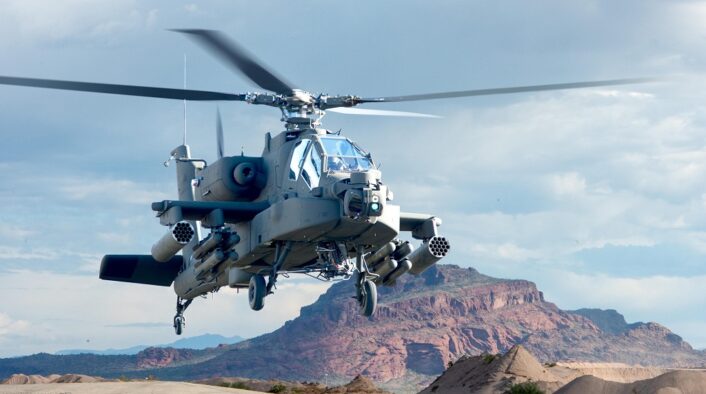
Helicopters from South Korea
South Korea has been upgrading its fleet of rotary-wing aircraft for several years, with the Apaches being just the latest addition to a growing and modernized fleet.
The Republic of Korea Army (ROKA, in Korean Daehanminguk Yukgun) is to replace the aging Bell AH-1 Cobra attack helicopters and MD Helicopters’ MD-500 Defender light helicopters with the indigenous KAI LAH (Light Armed Helicopter) from Korea Aerospace Industries, a design based on the European Airbus H155 (the former Eurocopter EC155, itself a variation of the Eurocopter AS365 Dauphin).
The American-built Bell UH-1 Iroquois/Huey and Sikorsky UH-60 Black Hawk models are also being replaced and supplemented by the twin-engine KAI KUH-1 Surion transport helicopters. This is a joint development by KAI and Eurocopter (now Airbus Helicopters) based on the Eurocopter AS332 Super Puma.
South Korea, which has operated the Boeing CH-47 Chinook heavy transport helicopter since the late 1980s, is also set to receive another upgraded version of the large helicopter in the coming years. The ROKA has also been operating AH-64E Apaches since 2016, with the new FMS providing additional aircraft but still not enough to reach the expected fleet of 100 AH-64E attack helicopters.
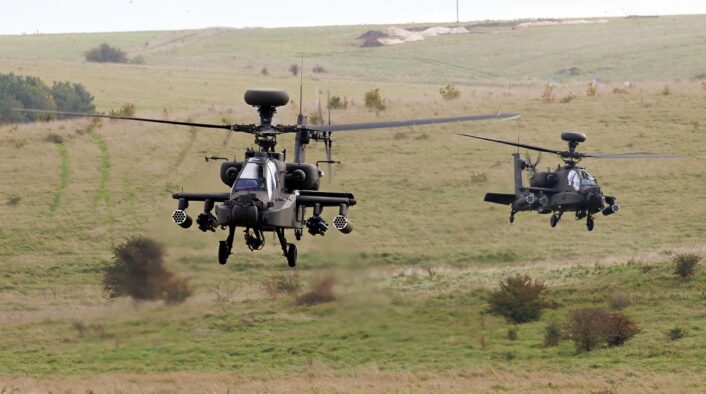
The AH-64E
The Apache was first produced by McDonnell Douglas in 1983 and is now available from Boeing in the AH-64E Guardian version, which has been in service since 2013. The older AH-64Ds can be upgraded to the newer -E standard, and some operators, such as the US and British armies, make use of this option.
The AH-64E continues to feature the AH-64D Apache Longbow’s AN/APG-78 Longbow millimeter-wave fire control radar (FCR), housed in a dome above the main rotor, but also offers digital connectivity, the Joint Tactical Information Distribution System, the ability to control unmanned aerial vehicles (UAVs), and the more powerful T700-GE-701D engines, giving the Guardian increased speed, climb rate, and payload.
The U.S. Army also began work on another upgrade, AH-64E Version 6.5, which includes updated software and integration of the new improved 3,000-horsepower T901 turbine engine that will also equip the UH-60M. In 2020, Boeing delivered the 2,500th AH-64 Apache helicopter from its production line in Mesa, Arizona. More than 500 E models have been produced since 2011, with more orders coming in. More than 1,300 Apaches are currently in service in 19 countries.
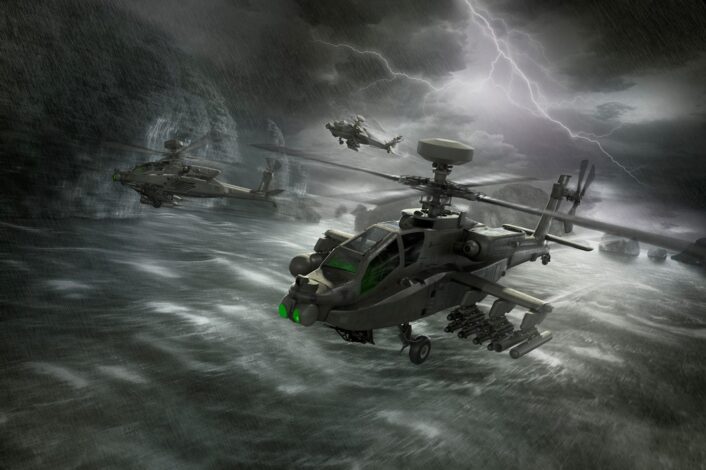
Foreign military sales
Approval of an FMS is not a real sale in itself, but rather the U.S. government’s approval of an allied country’s request to purchase military systems and permission to enter into the contract. As we reported in the case of Poland, after an FMS is approved, the country still has to negotiate the final contract, and additional time passes.
The final contract may also include offset deals, i.e. agreements that provide benefits to the buyer country (usually know-how transfer or local production). Poland recently signed offset deals with Boeing and General Electric worth almost one billion zlotys ($255 million) to compensate for the Apache deal.
The main contractors for both the FMS with South Korea and the contract with Poland are the American companies Boeing, Lockheed Martin and General Electric. The same companies were also recently involved in a huge FMS with Israel worth over $18 billion, which includes up to 50 new Boeing F-15IA multi-role fighter aircraft (the Israeli version of the F-15EX Eagle II) and 25 mid-life update conversion kits for the existing fleet of F-15I Ra’am multi-role fighter aircraft to bring them up to F-15IA standard.

